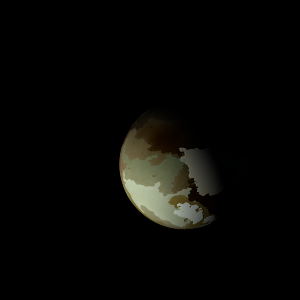|
|
Space Astro
|
Info for exoplanet "Uvife"
| Scientific (actual) data |
|---|
| Name | Kepler-211 c |
| Planet status | Confirmed |
| Radius | 0.115 |
| Orbital period | 6.04045 |
| Semi major axis | 0.062 |
| Discovered | 2014 |
| Updated | 2021-02-05 |
| Tconj | 2455010 |
| Impact parameter | 0.04 |
| Publication | Announced on a website |
| Detection type | Primary Transit |
| Alternate names | 2MASS J19014539+4310065 c, K00678.01, KIC 7509886 c, KOI-678 c, KOI-678.01, WISE J190145.38+431006.6 c |
| Star name | Kepler-211 |
| Right ascension | 285.44° |
| Declination | 43.17° |
| Mag j | 11.927 |
| Mag h | 11.488 |
| Mag k | 11.447 |
| Star distance | 312.14 |
| Star metallicity | 0.106 |
| Star mass | 0.97 |
| Star radius | 0.82 |
| Star temperature | 5123 |
| Star alternate names | 2MASS J19014539+4310065, KIC 7509886, KOI-678, WISE J190145.38+431006.6 |
| Wikipedia article | Kepler-211 c |
Back
| |
| Fictional info (?) |
|---|
| Suggested name | Uvife |
| Planet type | Hot planet |
| It is the coldest planetary atmosphere in its solar system, with a minimum temperature of 58°K (-215°C), and has a complex, layered cloud structure with ammonium hydrosulfide (NH4SH) thought to make up the lowest clouds, and hydrogen chloride the uppermost layer of clouds. |
| Atmosphere | Hydrogen chloride | 64% |
| Ammonium hydrosulfide (NH4SH) | 16% |
| Xenon | 10% |
| Argon | 5.7% |
| Hydrogen deuteride (HD) | 2.4% |
| Ozone | 1.1% |
| Helium | 0.031% |
| Methane | 0.018% |
| Atmospheric pressure | 0.001 bar |
 |
| No known satellites |
| Google search for Uvife |
|
Website by Joachim Michaelis
|
|
|
|